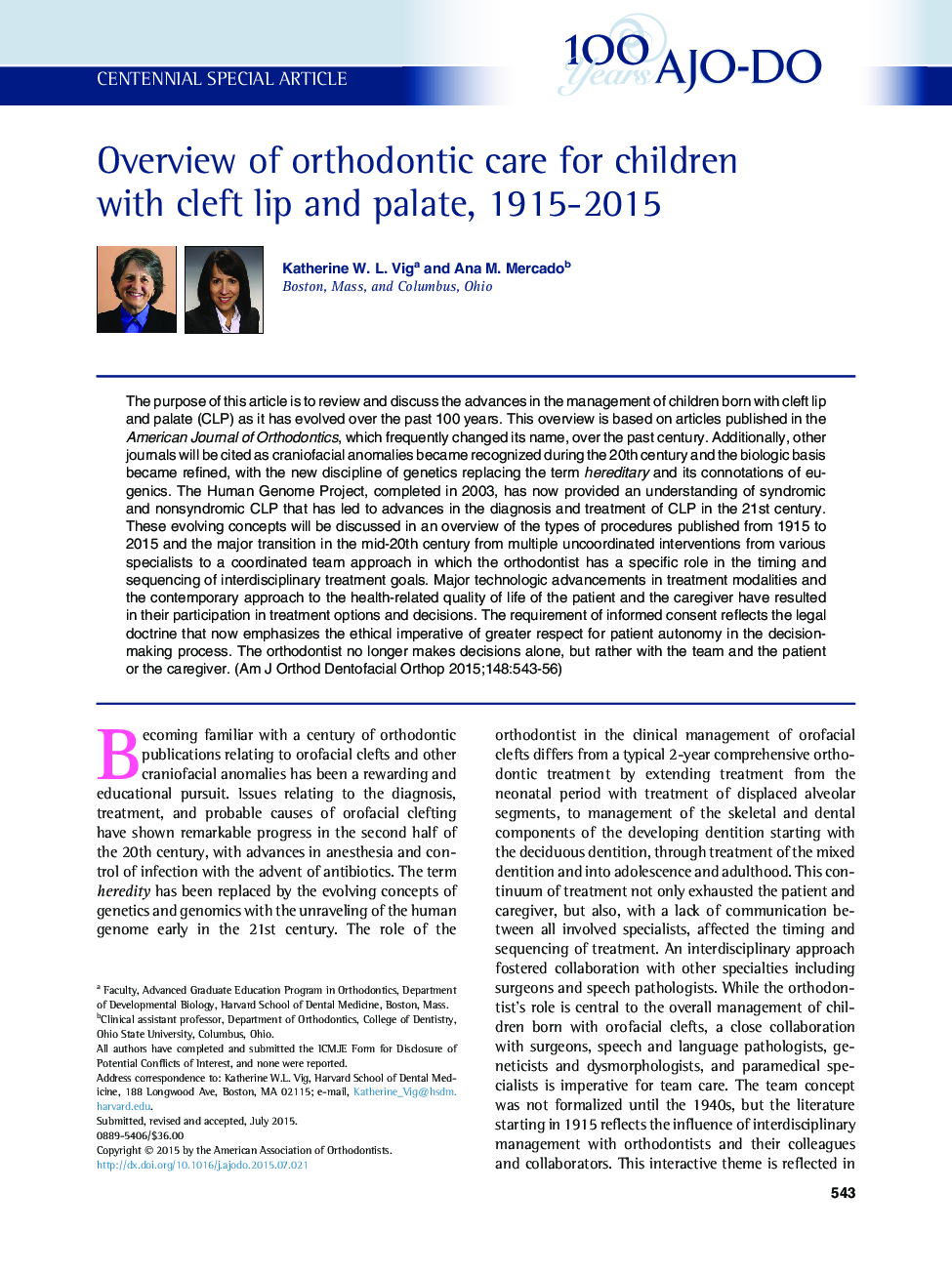| کد مقاله | کد نشریه | سال انتشار | مقاله انگلیسی | نسخه تمام متن |
|---|---|---|---|---|
| 3115860 | 1582683 | 2015 | 14 صفحه PDF | دانلود رایگان |
• Management of children born with cleft lip and palate (CLP) has evolved over 100 years.
• The biologic basis for studying craniofacial anomalies has been refined.
• The Human Genome Project provides understanding of syndromic and nonsyndromic CLP.
• Patients and caregivers have greater participation in treatment decisions.
• Orthodontists work with team members and the patient or caregiver.
The purpose of this article is to review and discuss the advances in the management of children born with cleft lip and palate (CLP) as it has evolved over the past 100 years. This overview is based on articles published in the American Journal of Orthodontics, which frequently changed its name, over the past century. Additionally, other journals will be cited as craniofacial anomalies became recognized during the 20th century and the biologic basis became refined, with the new discipline of genetics replacing the term hereditary and its connotations of eugenics. The Human Genome Project, completed in 2003, has now provided an understanding of syndromic and nonsyndromic CLP that has led to advances in the diagnosis and treatment of CLP in the 21st century. These evolving concepts will be discussed in an overview of the types of procedures published from 1915 to 2015 and the major transition in the mid-20th century from multiple uncoordinated interventions from various specialists to a coordinated team approach in which the orthodontist has a specific role in the timing and sequencing of interdisciplinary treatment goals. Major technologic advancements in treatment modalities and the contemporary approach to the health-related quality of life of the patient and the caregiver have resulted in their participation in treatment options and decisions. The requirement of informed consent reflects the legal doctrine that now emphasizes the ethical imperative of greater respect for patient autonomy in the decision-making process. The orthodontist no longer makes decisions alone, but rather with the team and the patient or the caregiver.
Journal: American Journal of Orthodontics and Dentofacial Orthopedics - Volume 148, Issue 4, October 2015, Pages 543–556
